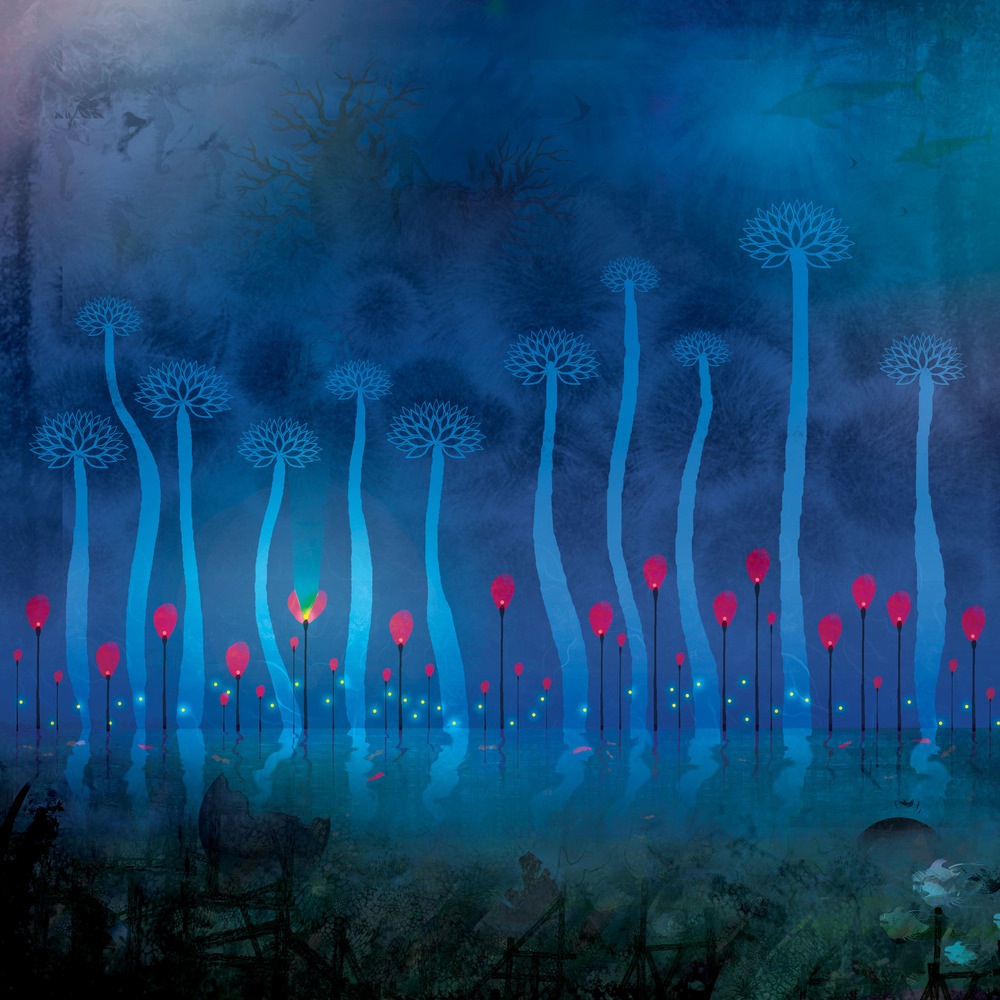Contributing Writer for Wake Up World
Dreams, a series of images, emotions and sensations that flow from the unconscious during sleep, belong to the mysterious, unquantifiable side of life. We all experience them, yet for many they are quickly forgotten or disregarded. However, for those who bother to pay attention to dreams they can be potent tools of self-discovery that not only help us to understand ourselves at deeper levels, but also allow us to play and explore in a way that is not possible in normal waking experience.
Usually when we dream we are not aware that what we are experiencing is occurring in our mind’s eye. Though the content can be illogical, confusing and downright strange, most of us generally just float along through the experience, often recognising that the events we are witnessing are bizarre, but not arriving at the level of awareness where we understand that we are immersed in a dream. However, as more people are discovering, it is possible to become conscious that we are dreaming; this is the phenomenon known as lucid dreaming.
[pro_ad_display_adzone id=”110028″]
In a lucid dream we are self-aware, and our ability to control dream events is enhanced so that the dreamscape becomes our personal playground. With practice we can become fully active rather than passive dreamers. There are ultimately no limits to what we can do in the dream world. We can choose to soar through the galaxy, have a conversation with Plato, attempt dangerous feats, or indulge in a naughty fantasy without worrying about limitations or consequences.
“The lucid dream, located as it is at a crossroads between worlds and states of consciousness, places the magician in a unique position to influence the delicate balance of consciousness and the interplay it has on matter in the waking state, and is thus an opportunity to test one’s ability in the art of adjusting the mutable fabric of Maya.” ~ Zeena Schreck
My first lucid dream was an experience I will never forget. It began as a normal dream, but as the narrative unfolded I suddenly became aware that I was dreaming. I decided to attempt actions that I could not do in real life. I started by doing a flip in the air, and was astonished by how real the experience felt. As I wondered what I should try next a man appeared next to me. “You should fly,” he said. ‘Of course’, I thought and took off into the air. Conscious dream flying was more difficult than I anticipated. I coasted along, but found it challenging to stay more than a few feet above the ground. Just before I woke up I decided to do the splits. As I sat with my dream body stretched into a pose that was normally impossible for my physical body, I touched my dream-legs and marvelled at the fact that I knew that my ‘real’ body was curled up in bed.
Lucid Dreaming and the Mind
While it is difficult for science to observe the dream world to the same extent as it can the physical world, technology and brain mapping have made it possible to provide a degree of insight. A recent study conducted by researchers from the Max Planck Institute for Human Development in Berlin, and the Max Planck Institute of Psychiatry in Munich, compared brain structures of frequent lucid dreamers with participants who never, or only rarely had lucid dreams. The neuroscientists involved in the research discovered that the anterior prefrontal cortex, the brain area which enables self-reflection, was significantly larger in subjects who were capable of becoming lucid in their dreams. [1] Based on this finding the researchers postulated that lucid dreamers would likely be more self-reflecting when awake.
As part of the study the participants were asked to solve tests that related to self-reflection while awake. The researchers then took images of their brains during the process. Those images demonstrated that the brain activity in the prefrontal cortex was more prominent in those with the ability to dream lucidly. “Our results indicate that self-reflection in everyday life is more pronounced in persons who can easily control their dreams,” said Elisa Filevich, a researcher at Lifespan Psychology at the Max Planck Institute for Human Development. The difference in size of the anterior prefrontal cortex between lucid dreamers and non-lucid dreamers suggests that lucid dreaming and the capacity for self-reflection are closely linked.
Though the distinction between lucid dreamers and the general population was identified in this study, the researchers were not able to establish whether training subjects in lucid dreaming could help improve the capacity for self-reflection or vice versa. They hope to explore this in a follow-up study.
Other studies have shown that lucid dreamers are more creative, have a better ability to use divergent ‘outside-the-square’ thinking, have better dream recall, and have a higher level of personal significance in the content of their dreams. [2] [3]

This image © Paul Summerfield, courtesy of www.psummerfield.com
Lucid Living
Though only a small proportion of the general population experiences lucid dreaming I believe this is largely due to lack of knowledge or interest rather than innate ability. The human brain has an amazing capacity for change and improvement at any stage of life. Anyone who is committed can learn the art of lucid dreaming. There are many simple tricks and techniques that a person can use to improve their likelihood of becoming lucid in a dream. The important keys are awareness, practice and consistency.
One of the most common exercises used to encourage lucid dreaming is to develop the personal habit of regularly checking the status of the reality we are immersed in. In lucid dreaming communities when this approach is practiced consistently it is known as ‘all day awareness’ (ADA). In ‘all day awareness’ one focuses on the subtle aspects of daily life that the majority of people ignore or take for granted. As a person gets into the habit of paying attention to details in their surrounds, it becomes second nature to continue this practice even when dreaming. Often it is the awareness of illogical or impossible details that act to alert a dreamer that what they are experiencing is not regular waking life. It is interesting to note ADA shares many common traits with mindfulness practice, which has also been shown to enhance self-awareness, and many people who practice mindfulness report discovering lucid dreaming as a natural bi-product of their enhanced awareness.
John Bargh, a social psychologist from Yale, estimated that by the time we are adults the majority of us operate on autopilot up to 95% of the time. When we operate in autopilot we are essentially just going through the motions and largely living our lives unconsciously. This sees us operating in an increasingly contracted, limited version of reality, which is the opposite of how we initially experience the world. As children our outlook is an open, expansive perspective, one that is saturated with newness and wonder.
“As in lucid dreams, you see yourself or others with new eyes; your senses awaken and grasp an experience more fully than ever before; suddenly, you find your ears are open to hear with a deeper understanding.” ~ Jenny Davidow, Embracing Your Subconscious: Bringing All Parts of You into Creative Partnership
So the more we focus on increasing our awareness, the more we can rekindle that child-like perspective that allows us to experience the greater whole of existence. Through learning how to consciously interact with all of life in every moment, we open doors to richer, more meaningful and exciting experiences and opportunities in both our dream and waking realities.
Practical ways to induce lucid dreaming
For more information on lucid dreaming, including practical tips to help you achieve the lucid dream state, please see:
- How to Induce Lucid Dreaming
- How to Maintain a Lucid Dream
- Lucid Dreaming and the 5 Stages of Sleep
- Liberation Through Lucid Living – Finding Consciousness Within the Dream
- Active Dreaming: Exploring the Vivid Dreamscape
Article references:
- [1] http://www.eurekalert.org/pub_releases/2015-01/m-lda012315.php
- [2] https://journals.ub.uni-heidelberg.de/index.php/IJoDR/article/viewFile/10640/pdf_50
- [3] http://www.ncbi.nlm.nih.gov/pmc/articles/PMC3480633
About the author:
Christina Lavers is a writer, an artist, a creative enthusiast, and an inner world explorer. Born in Montreal Quebec, Canada, she now lives with her life partner and son in a rainforest pocket in the hills behind Coffs Harbour, NSW Australia. She spends her time playing, creating, growing and sharing.
Christina is devoted to assisting people to find and connect with their own creative magical current that flows deep within. She is now offering a comprehensive e-course designed to help people light up their world with passion and creativity. You can access Section One here for free!
Christina has also recently published her first full length book, a memoir about her wild awakening journey entitled Jump Into the Blue, and she is currently working on the next one.
“My journey has been about personal alchemy… exploring the mysteries of my soul and my environment, and learning to bring all aspects, the light and the dark, together with the transcending ingredient… love. The more I uncover and nurture the wounded aspects of my being, the more whole and grounded I feel and the more my outer world reflects the love, wonder and magic I have discovered inside”.
You can follow Christina’s work at:
Further articles from Christina Lavers:
- Can Medical Marijuana Relieve Migraines?
- 10 Signs You’ve Bought Spin
- New Study Shows Regular Contact with Nature Reduces Crime, Increases Social Cohesion
- Research Shows Just 7 Minutes of Meditation Can Reduce Racial Prejudice
- Taking Care of Our Inner Tribes – Microflora, Awakening and You
- Groundbreaking Study Maps the Decline of Wild Bee Communities in the United States
- Taking Responsibility For Our Energy
- More Evidence That TV is Dumbing Us Down
- Synchrony and Exertion of Dancing Found to Encourage Social Bonding, Raise Pain Threshold
- Quitting Smoking? Try These Herbs, Tips and Incentives to Help You Succeed!
[pro_ad_display_adzone id=”110027″]








